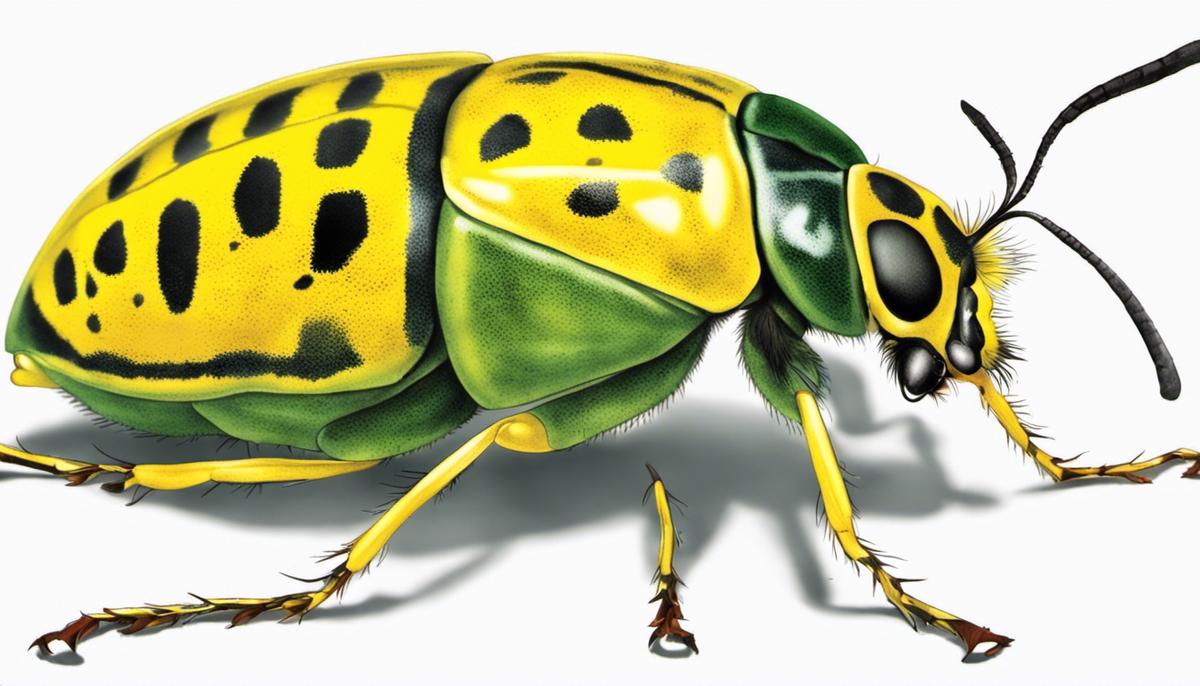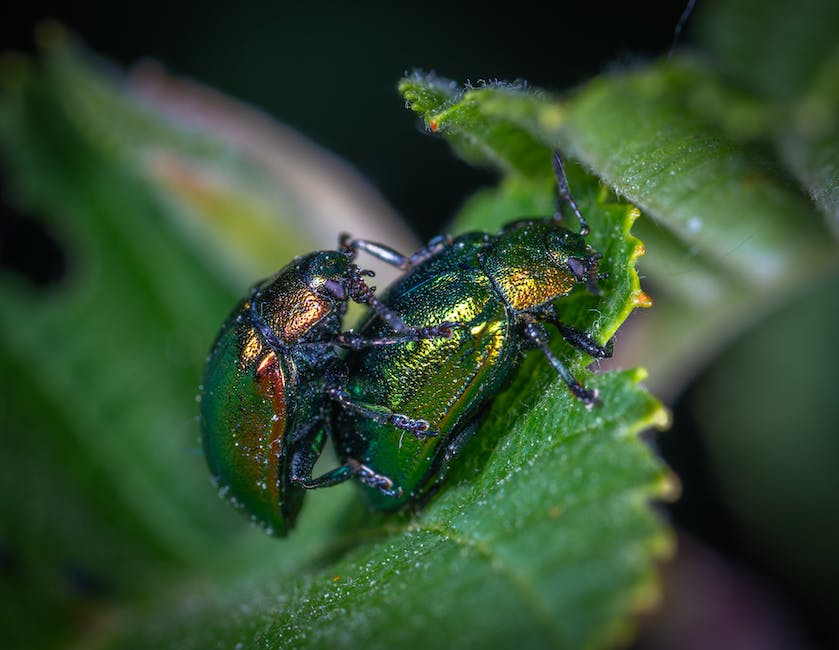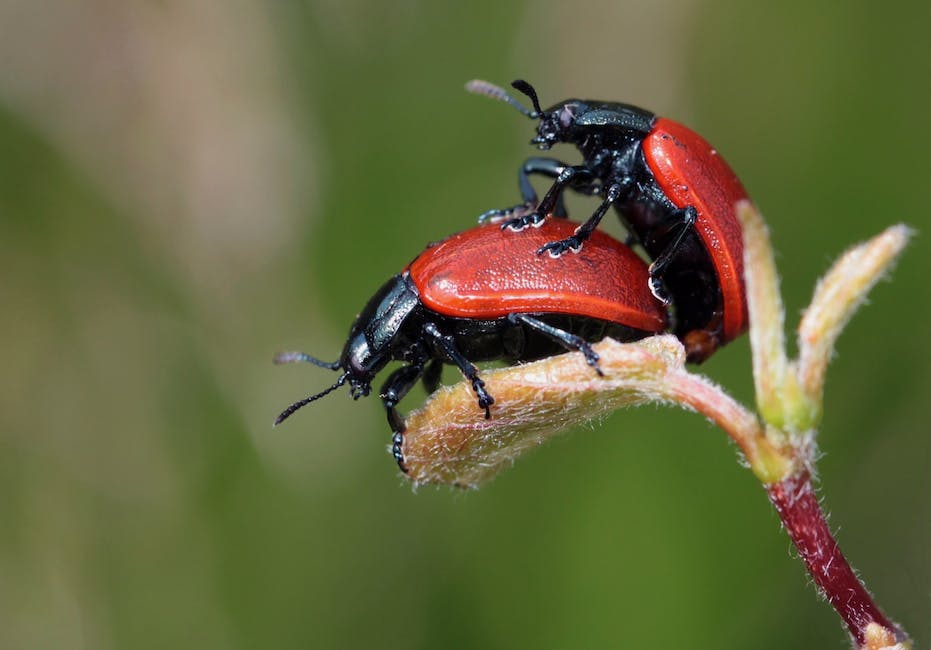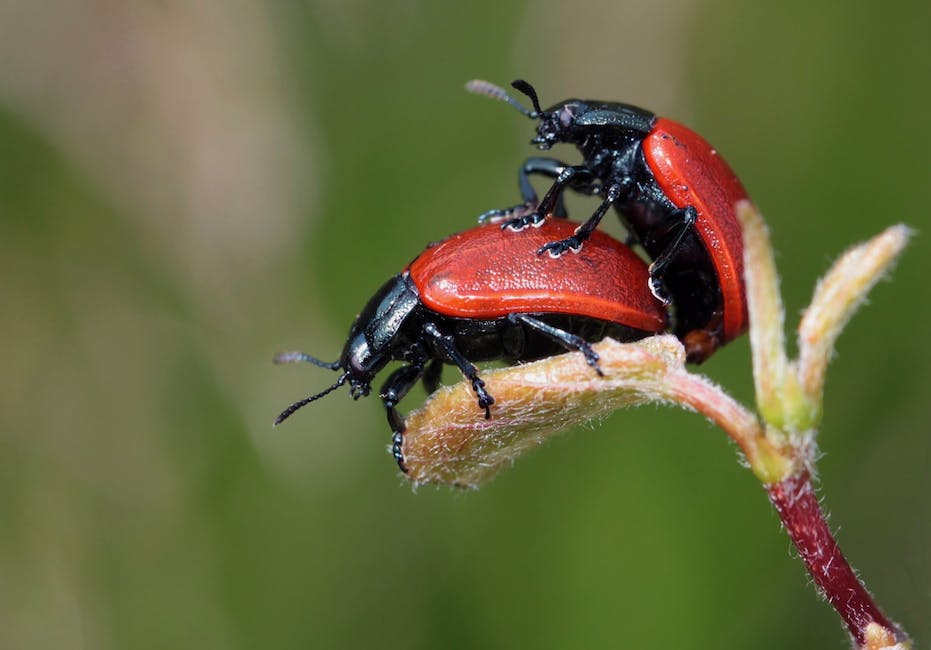Eliminate Cucumber Beetles: A Step-by-Step Guide

When it comes to safeguarding your beloved garden, it is vital to understand the formidable pests that can cause detrimental harm to your plants. One such intruder, the cucumber beetle, is a common yet destructive pest that can decimate your cucumbers and other squash family plants. Recognizing the cucumber beetle, with its unique physical features and particular behaviors, will be the first step in this journey towards a pest-free garden. This article will provide an in-depth look at these creatures, as well as various control methods that range from natural, organic strategies to more powerful chemical-based treatments. The key is to approach this task with knowledge, patience, and caution, ensuring that you use the best method for your garden.
Identifying Cucumber Beetles
The Beetle Battle: Correctly Identifying Cucumber Beetles in the Garden
Gardening: the peaceful pastime that combines fresh air, creativity, and a touch of scientific know-how. Whether a hobbyist has a sprawling country homestead or a tiny urban plot, there’s nothing more connecting than tending to the soil and watching plants grow. But what happens when unwelcome pests, specifically cucumber beetles, threaten to devastate your green babies? Fear not! Unmasking these garden murderers and understanding their characteristic features is the first line of defense in any gardener’s pest management strategy.
There are two certain culprits to be aware of when it comes to cucumber beetles: the Striped Cucumber Beetle (Acalymma vittatum) and the Spotted Cucumber Beetle (Diabrotica undecimpunctata howardi). Despite their shared last name, these insects differ subtly in appearance. Let’s dive headfirst into just what makes each ‘beetle brother’ unique.
The Striped Cucumber Beetle is most often accused of damaging cucumber, squash, and melon plants. This tiny terror is distinct, standing about 1/5 of an inch tall with a yellowish body segregated into three parts: the head, thorax, and abdomen. Running longitudinally from its head to the end of the body, one will surprisingly discover three black stripes – the unique identification card of this pest.
Flipping over to the Spotted Cucumber Beetle, one might notice a slight difference. This beetle inhabits a broader menu, targeting not only cucumbers but also corn, soy, and various wild plants. Its appearance varies with a solid yellow-green body adorned with twelve black spots, marking a starry map on its back. At roughly 1/4 inch long, the Spotted Cucumber Beetle is slightly larger than its striped cousin.
One thing both beetles share – a knack for hide-and-seek, especially during hot sunny days. To confirm suspicions of these unwelcome guests when the sun is high, keen gardeners should inspect the undersides of leaves or around the base of plants.
Understanding the life cycle of cucumber beetles is another clue in correctly identifying them. Both types follow a similar pattern: egg-larvae-adult. Eggs are usually deposited in the soil or on host plants during late spring. Within a week, the larvae hatch and begin feeding on plant roots. After two to four weeks, they morph into the adult beetles many gardeners dread.
Spotting the cucumber beetles early in their life cycle is vital since they are known carriers of bacterial wilt and cucumber mosaic virus. If found, immediate and strategic pest management methods are highly advisable.
Before one can tackle a problem, it must be clearly identified. Is it a Striped Cucumber Beetle with rhythmic black stripes, or the Spotted Cucumber Beetle showcasing bold black spots? Whichever it is, armed with this knowledge, every dedicated gardener can don their gloves, hat, and wield their organic insecticides, ready to reclaim their green territories. Let the knowledge of beetle identification be your first ally in this horticultural battle. Happy gardening!
//
Natural Pest Control Methods
Natural Ways to Keep Cucumber beetles at Bay
Taking up gardening is like journeying into a thrilling world where humans and nature synergize to create magnificent beauty. One of the adventures that every gardener must undertake is maintaining a pest-free garden. Among the common foes lie the notorious cucumber beetles which, despite their small sizes, can wreak havoc on cucumber plants.
Natural pest control methods are gaining popularity among gardening enthusiasts due to their environmentally friendly approach. Those seeking to control cucumber beetles through natural means will find a wealth of options, ensuring damage is minimally intrusive to the plants and the surrounding ecosystem.
Firstly, introducing beneficial insects is a tried and true method for managing cucumber beetles. Some of these beetles’ natural enemies are ladybugs, spiders, and ground beetles which work as biological pest control. These beneficial insects and others can be integrated into the garden to prey on cucumber beetles, thus, establishing an ecological balance.
Crop rotation is another fabulous strategy. This agricultural method involves changing the type of plants grown in a specific area across different seasons. The practice is beneficial in pest management because it deprives the pests of their preferred host plants, disrupting their life cycles and reducing their populations in subsequent seasons.
Strategically applying Neem oil – an organic pesticide – can also be a prominent weapon in a gardener’s arsenal. Neem oil works by disrupting the life cycle and feeding behavior of cucumber beetles. Apply the oil directly to the plants and watch as it works magic by repelling, feeding, and growth-disrupting the beetles.
Another natural method to consider is the use of Diatomaceous Earth. It’s a type of powder made from fossilized marine phytoplankton and is non-toxic to humans and animals. Sprinkling it around the base of cucumber plants can deliver a lethal blow to this pesky pest.
Try using insect barrier cloths, too. These cloths are laid over plants to shield them from pests while allowing for light and rain. Floating row covers are effective during the early stages of cucumber growth and can be removed once the plants need pollination.
Garlic spray serves a dual purpose by offering the plants essential nutrients and acting as a repellent against cucumber beetles. The strong aroma confuses the beetles and prevents them from laying eggs.
Yellow sticky traps are also a viable option. Cucumber beetles, being attracted to the color yellow, are easily lured and trapped on these glue-laden sheets. They can then be removed safely without causing harm to the plant or garden.
Combining these natural methods will not only reduce the cucumber beetle population, but also encourage a healthy, harmonious ecosystem. So grab those gardening gloves, prepare your defense strategies, and embrace the gratifying challenges of gardening!

Chemical Control Methods
Diving right into battle against cucumber beetles, we’ll start with one class of potent pesticides – Pyrethroids. Pyrethroids such as permethrin and cyfluthrin are synthetic compounds and prove to be highly effective against a plethora of insect pests, including cucumber beetles. Available in various forms such as sprays and dust, they work by disrupting the normal functioning of the beetles’ nervous system eventually leading to their death.
Next up, Carbamates such as carbofuran and carbaryl are also approved for use against cucumber beetles. Carbamates, similar to Pyrethroids, affect the insects’ nervous system. They are available as granules, liquid or spray. It’s crucial to remember that while they may be effective, they can be harmful to non-target organisms as well.
Let’s not ignore the power of organic pesticides like Spinosad. Spinosad is derived from a naturally occurring bacterium and is effective in controlling a wide range of insects, including cucumber beetles. It can be used in a spray form and is considered safe for use around pets and wildlife.
Insecticides containing Kaolin clay also do a commendable job in keeping these pesky beetles at bay. When sprayed on plants, Kaolin forms a barrier that beetles find unappealing and thereby prevents them from feeding on cucumbers.
Plant-derived pesticides also pull their weight when it comes to battling cucumber beetles. Pyrethrins, derived from chrysanthemum flowers, effectively kills beetles upon contact. Another plant-powered pesticide is Azadirachtin, derived from the seeds of Neem tree. It serves as an antifeedant and disrupts the life cycle of these beetles.
A realm we’ve overlooked so far is that of beneficial nematodes. These microscopic, worm-like creatures act as natural predators of cucumber beetles, targeting their larvae residing in the soil. With different species effective against different pests, the choice of nematodes should be specific to the cucumber beetle.
Last, Beauveria bassiana, a fungus that acts as a natural pesticide, proves highly effective against cucumber beetles. Sprayed onto plants, the fungus infects beetles leading to their death.
Remember, always wear protective clothing while handling pesticides and strictly follow the instructions on the label. Direct all your efforts towards these small adversaries and reap the benefits of a cucumber beetle-free garden!

Overcoming the cucumber beetle menace calls for arming oneself with a comprehensive knowledge of the beetle and the myriad of methods available to counteract their invasion. It’s crucial to balance between natural and chemical control measures, selecting what best fits your circumstances and adheres to your personal gardening philosophy. Ultimately, control of cucumber beetles doesn’t just protect your plants; it preserves the health and harmony of your entire garden ecosystem. The aim of this information is to assist you in making informed decisions, which in turn, will make your gardening experience more fulfilling and less plagued by destructive pests.



